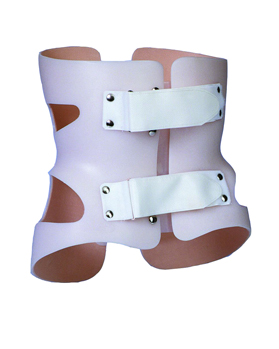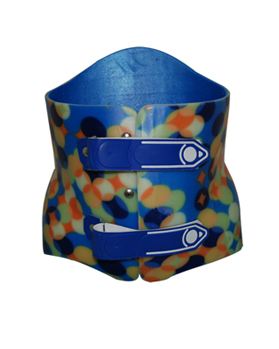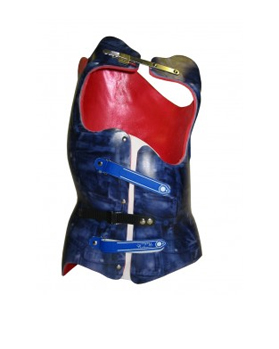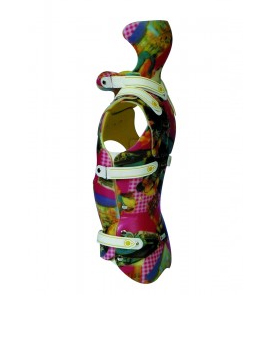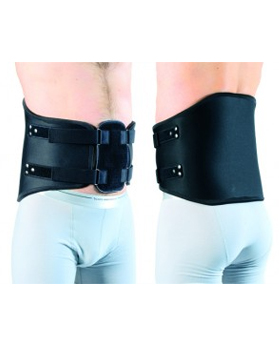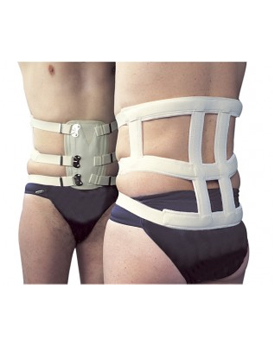Spinal immobilization orthosis
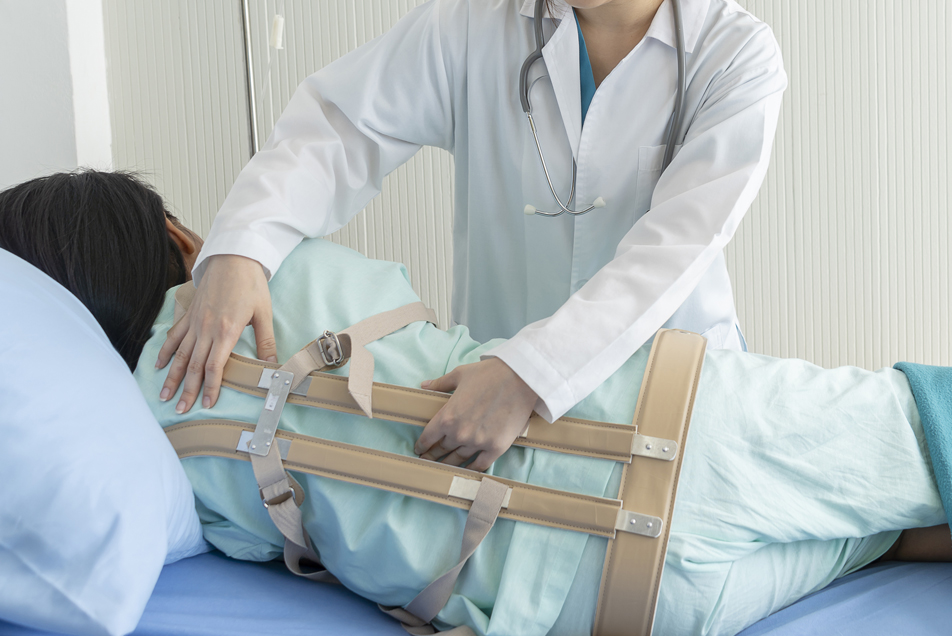
Spinal immobilization orthoses are custom-made orthopedic medical devices intended to immobilize all or a part of the spine.
There are two types:
Secure hold spinal orthoses
Secure hold spinal orthoses (OVALE, thoraco-lumbar, lumbar and minerva spinal orthoses)
They are made from a variety of materials selected to ensure a secure hold and to facilitate care and cleaning tasks.
These orthoses can be used either temporarily or permanently.
Different types of secure hold orthoses can be fitted to the user depending on the degree of immobilization required for their pathology.
These individualised medical devices are made to comply with a medical prescription and then adjusted and fitted to the user exclusively by qualified and accredited orthotists .
Providing the user with this type of spinal orthosis is a three-stage process:
• Taking measurements and creating a mold/3D scanned image.
• Fitting: the orthotist performs the preliminary fitting of the device to see how it performs and then adapts it as required. The final fitting is validated by the medical team. The orthotist will give the user advice about fitting the orthosis correctly at home and will provide instructions for use and for caring for the device.
• Follow-up: for as long as the orthosis is worn, the orthotist may be required to make modifications to ensure optimal immobilization.
OVALE spinal orthosis Lumbar spinal orthosis Thoraco-lumbar spinal orthosis Minerva spinal orthosis
Lumbar corset
Lumbar corsets (B1 vertebra immobilization orthosis (B1VIO), A vertebra immobilization orthosis (AVIO), B2 vertebra immobilization orthosis (B2VIO)) are custom-made and can be fitted perfectly to every morphology.
When designing a custom-made corset, the orthopedist, in compliance with the prescription and the specified requirements, considers everything known about the user (pathology, morphology, age, activity level, etc.) and determines the strength and shape of the orthosis accordingly.
In agreement with the user, the orthopedist sets up the fastening and adjustment system (using hook-&-loop straps, buckles or lacing) and then adapts and determines its optimal positioning for the pathology the orthosis is intended to manage.
Finally, the orthopedist ensures that the degree of posterior restraint (from firm support to immobilized) is set such that the orthosis does not restrict the user’s everyday activities.
These orthoses are intended for both temporary and permanent use.
Providing the user with this type of orthosis is a four-stage process:
• Measuring up: by an accredited orthopedist.
• Preliminary fitting for trial purposes: performed by the orthopedist to finely adjust the orthosis.
• Fitting: the orthopedist checks the fitting, gives the user advice about fitting the orthosis correctly at home and provides instructions for use and for caring for the device.
• Follow-up: It is advisable to arrange for an annual check to ensure that the outcomes are as expected.
B1VIO AVIO B2VIO
